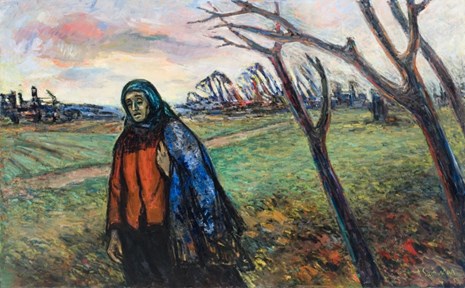In the morning of 3 June 1944, Soviet partisans ambushed a column of Nazi vehicles not far form the village of Pirčiupiai. Several German soldiers were killed in the attack. In June, battles between the Nazis and the Soviets were taking place so close that the Wehrmacht behaved as if they were on the front line, which explains their severe response. That same day, a punitive platoon appeared in the village and drove all the villagers, mostly women, children and old people, a total of 119 individuals, into barns, which they set on fire, thus burning them alive. The execution carried out by the Nazis was cruel and senseless; eventually it became a symbol of the horrors of war in Lithuania, and was often evoked and interpreted in visual art, literature and film.
After a fairly long silence, when the memories of eyewitnesses had lost their poignancy, and the number of witnesses had diminished, the tragedy of Pirčiupiai was recalled in 1958, in the preparations for celebrating the 'fifteenth anniversary of the liberation of the Lithuanian SSR from the Nazi occupiers'. The Ministry of Culture of the LSSR announced a competition to design a memorial sculpture for Pirčiupiai. The painting by Augustinas Savickas appeared on this wave of publicity. The first version was quite different to the one exhibited in this hall: initially, the artist showed people mourning beside smouldering houses. However, later he decided that it was too direct, and painted the second version in the then popular Severe Style. He eliminated all decoration and everyday detail, leaving just a single figure of a mother leaving the burnt-down village. A similar symbol of a mourning mother figure was used by Gediminas Jokūbonis, who made a sculpture on the same theme that can still be seen at Pirčiupiai. The dynamic composition, distortion in the style of Lithuanian folk art, vibrant colours and brush strokes characteristic of Savickas' picture witness the artist's aspiration to evoke the tradition of interwar Lithuanian Modernist painting that was neglected in the Stalinist period.



